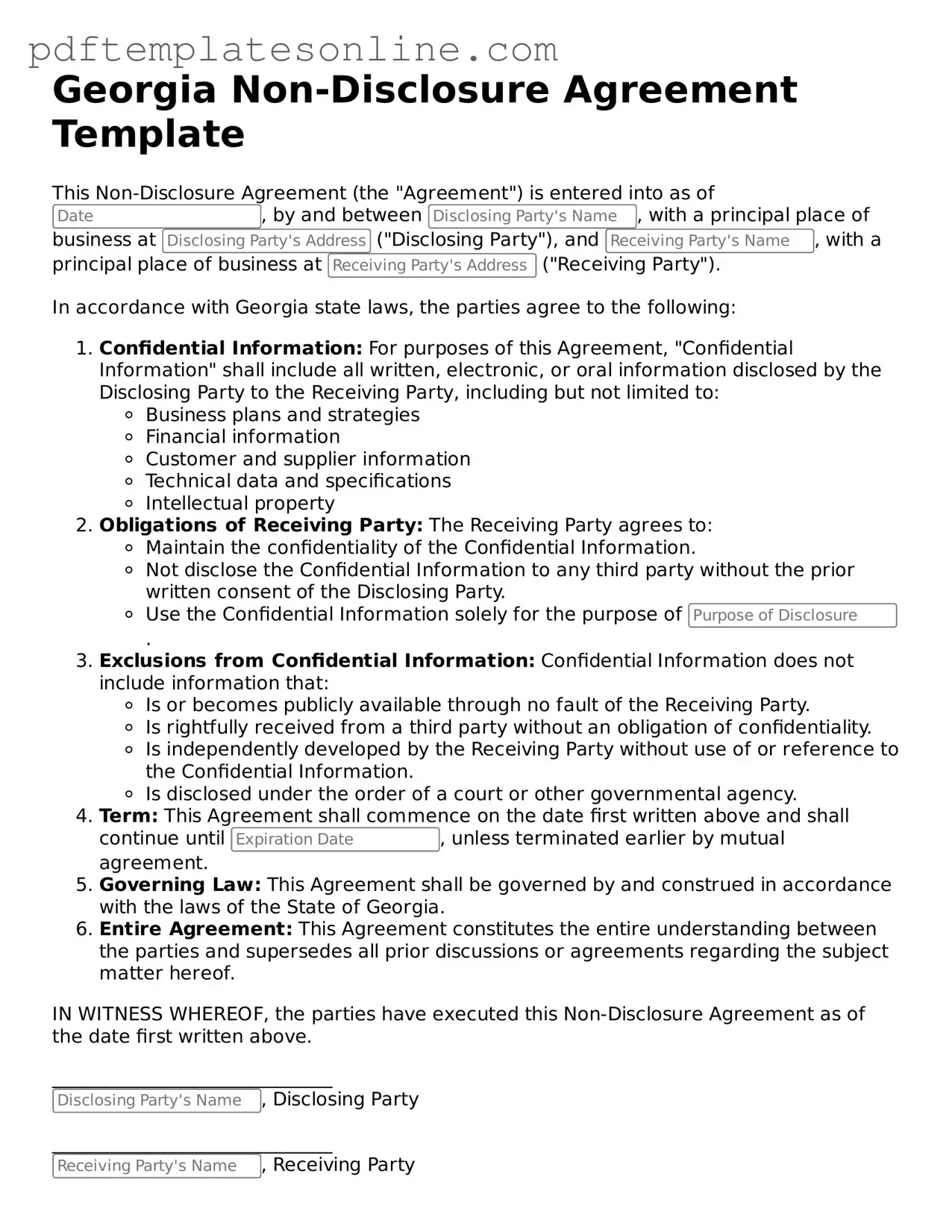When it comes to filling out the Georgia Non-disclosure Agreement (NDA) form, many individuals make common mistakes that can lead to complications down the road. One of the most frequent errors is failing to clearly identify the parties involved. It’s crucial to specify who is disclosing the confidential information and who is receiving it. Without this clarity, the agreement may become unenforceable.
Another mistake is neglecting to define what constitutes “confidential information.” Vague terms can lead to misunderstandings. It’s essential to be specific about the types of information covered by the NDA. This clarity helps protect sensitive data effectively.
People often overlook the duration of the confidentiality obligations. An NDA should clearly state how long the information must remain confidential. Some individuals mistakenly leave this section blank or set an unrealistic timeframe, which can lead to disputes later on.
Additionally, many fail to include the purpose of sharing the confidential information. Clearly outlining the reason for the NDA helps establish the context in which the information will be used. Without this context, the agreement may lack the necessary legal grounding.
Another common oversight is not considering the consequences of a breach. It’s vital to outline the repercussions for violating the NDA. This could include financial penalties or legal action. Without these stipulations, the agreement may not deter potential breaches effectively.
People sometimes forget to include a clause for dispute resolution. Specifying how disputes will be handled, whether through mediation or arbitration, can save time and money in the event of a disagreement. Without this clause, parties may find themselves in lengthy and costly litigation.
In some cases, individuals fail to seek legal advice before signing the NDA. Legal professionals can provide valuable insights and help ensure that the agreement is fair and comprehensive. Skipping this step can lead to significant issues later on.
Another mistake is not keeping a copy of the signed agreement. It’s essential to have a record of the NDA for future reference. Without a copy, parties may forget the terms or misinterpret their obligations.
Moreover, people often underestimate the importance of reviewing the NDA before signing. Rushing through the process can lead to overlooked details. Taking the time to read and understand the agreement is vital to ensure all parties are on the same page.
Lastly, individuals sometimes forget to update the NDA as circumstances change. If the nature of the relationship or the information being shared evolves, the agreement may need to be revised. Failing to do so can leave parties vulnerable and unprotected.
